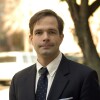Being a good leader often comes down to good communication: Strong leaders listen to their teams and—sometimes—change their strategies in response.
“You need to have the ability to have your team tell you when you’re wrong. You have to face the fact that when you make decisions, nothing is going to be 100 perfect correct,” said Margaret Keane, CEO of Synchrony Financial, at “View from the Top: Leadership in the 21st Century,” a session at the Urban Land Institute’s 2014 Fall Meeting held October 21–23 in New York City. The session was moderated by Marilyn Jordan Taylor, dean and Paley professor at the School of Design of the University of Pennsylvania.
Starting Again
Just out of college, Keane joined Citibank and quickly rose to run its retail banking operations in New York. “I was working incredible hours, making big decisions at a very young age,” she said. Then she left to start over again at GE Capital. “I am a risk taker,” says Keane. “Getting recognized within that organization is not an easy thing to do. . . . I gained a lot of confidence.”
This past July, Keane led the initial public offering that is completing the transformation of GE Capital to become Synchrony Financial, which she leads as CEO.
Getting Inspired
Nancy Kete was struggling to finish her doctoral dissertation when she took a job at the U.S. Environmental Protection Agency, where she worked on the team tasked with fulfilling a campaign promise made by President George H.W. Bush in the election of 1988 to solve the problem with acid rain. “That gives you a lot of confidence, when you are in the agency and you are briefing the administrator,” said Kete.
Kete used some of that confidence to finish her delayed dissertation, writing on the market-based, emissions trading mechanisms she helped create to fight acid rain. She went on to spend 13 years at the World Resources Institute, where she founded and EMBARQ, a program to catalyze transformational transit projects in cities in Mexico, Brazil, India, Turkey, and the Andean region.
She joined the Rockefeller Foundation in 2012 as managing director and now leads the foundation’s global work on resilience—just in time for the national conversation on resilience that followed Hurricane Sandy, which flooded New York City that year. Her organization worked closely with the federal government’s Rebuild by Design program and other stakeholders throughout the New York area.
Teamwork and Leadership
Both leaders have created strategies to allow teams to generate—and communicate—new ideas. Keane holds idea-generating sessions similar to the “charrette” design sessions held by some architects with their stakeholders. “We call them bold sessions,” said Keane. For example, she brought in clients and customers to brainstorm prototypes for private credit cards for large retail companies. “We can do things in a 12-week cycle that would have taken a year,” she said.
Kete has become a believer in the “Agile Method,” first created by software designers to promote collaborations between self-organizing, cross-functional teams. Giving these teams a certain amount of autonomy creates new ideas and solves problems. “I let my young people manage me to a certain extent,” she said.
Both of these leaders had strong feelings about how to lead young employees. “I think this is a fantastic generation,” said Keane. “They thrill themselves into work. . . . They are willing to take a seat at the table and have a voice. . . . Companies in general are going to have to rethink how they think about millennials.”
Leadership strategies like these are especially important when leading younger employees. “They flow into teamwork, and respect other points of view coming in,” said Taylor.






